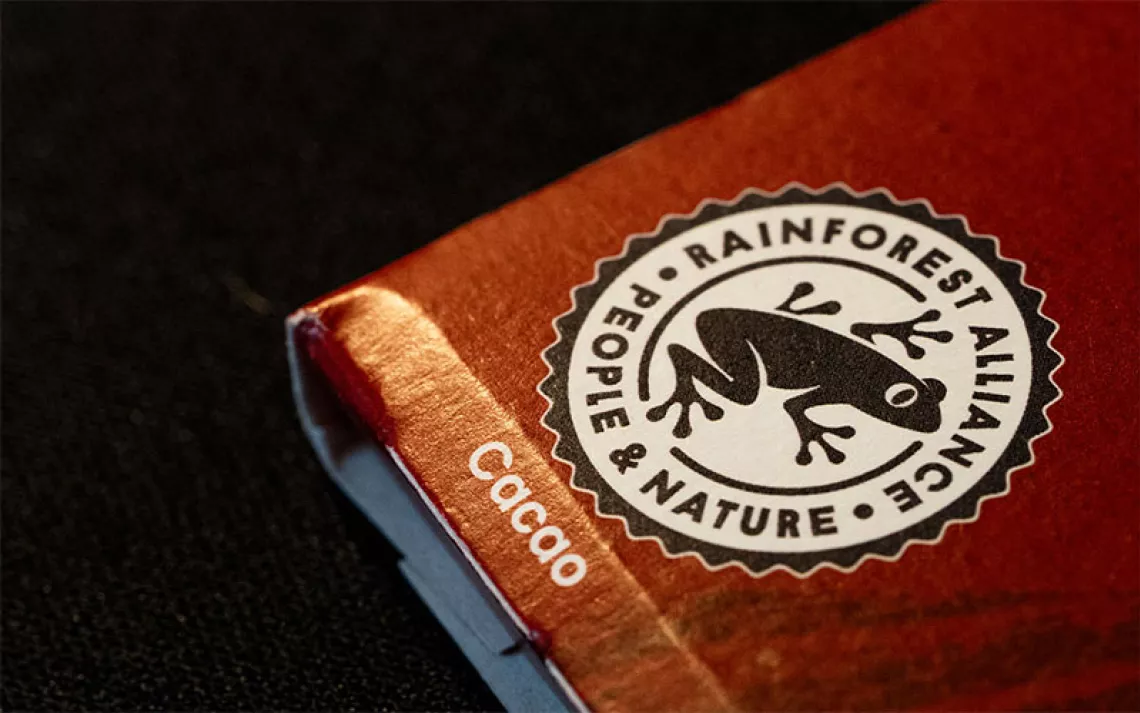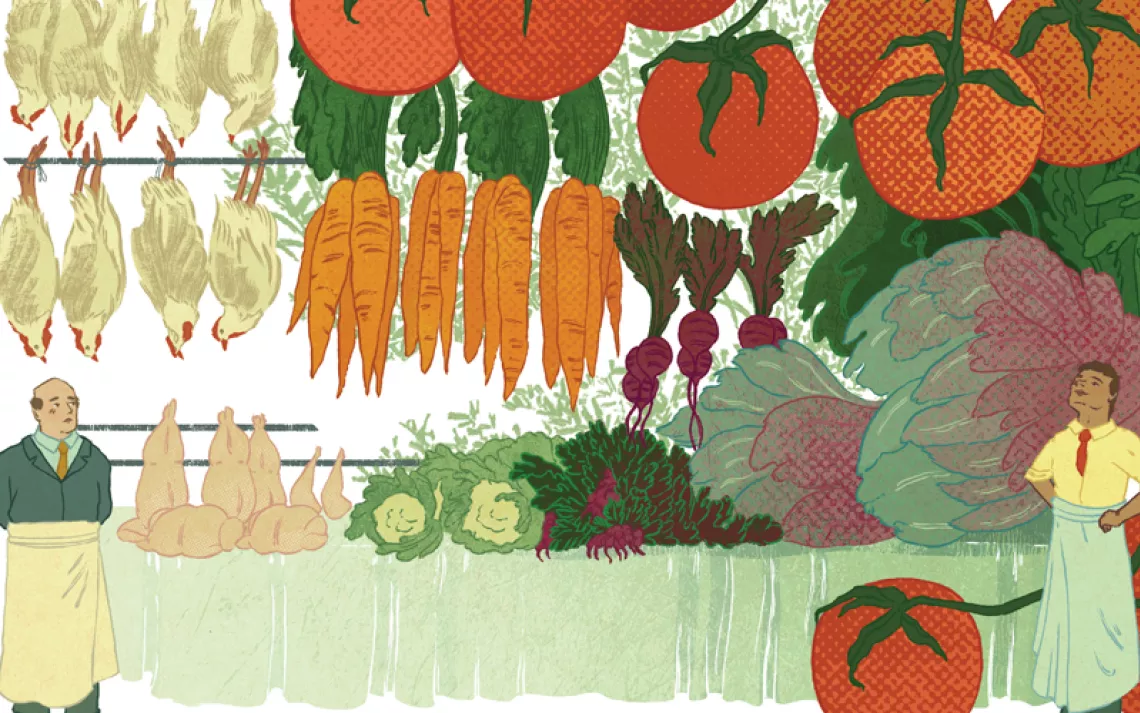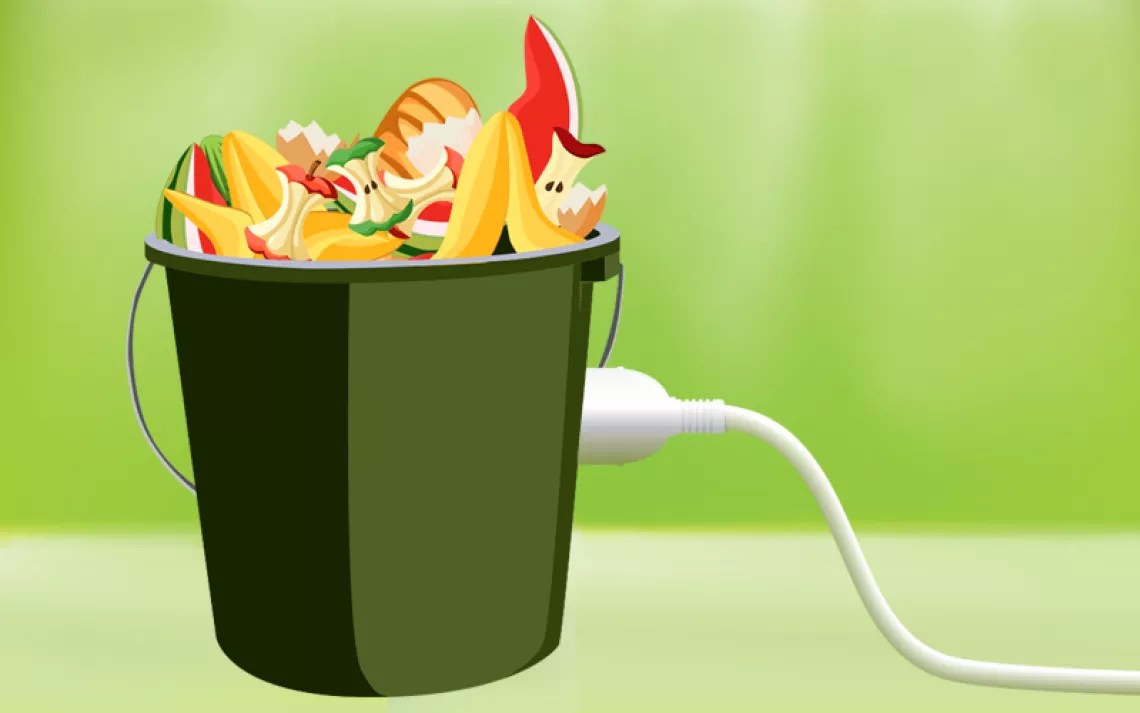Added Value
A new study suggests that biodynamic and organic vineyards produce better wine
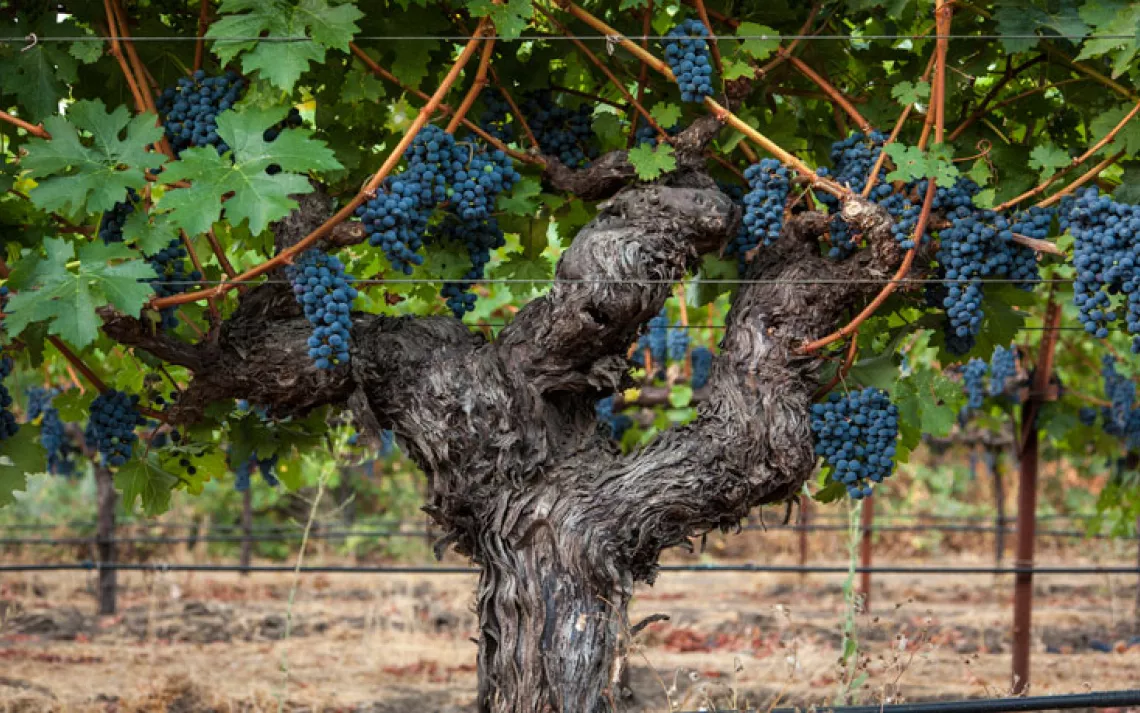
A Grgich Hills Estate cabernet sauvignon vine, planted in 1959 | Photo courtesy of Grgich Hills Estate
For decades, vineyard managers and wine aficionados have wondered whether growing organic and biodynamic grapes is worth the trouble. Last summer, the Journal of Wine Economics may have unveiled the answer via a report from researchers out of UCLA’s Institute of the Environment and Sustainability. For the study, environmental economists evaluated the results of 74,148 wines reviewed by Wine Spectator, Wine Advocate, or Wine Enthusiast, accounting for the variation in region, vintage, and variety. They discovered that wine made from biodynamic and organic grapes on average scored four points higher on a 100-point scale than wine made from conventionally grown grapes. "We found that organic or biodynamic farming made a significant difference in wine quality," says lead author Magali Delmas, an environmental economist and professor at the UCLA Anderson School of Management.
Dozens of eco-certified California vineyards are embracing dry, no-till, and biodynamic farming. Vignerons cultivate the land organically, tend farm animals across a varied landscape, blend their own compost, mix and apply their own soil preparations, and harvest grapes according to a celestial calendar. To find out exactly how regenerative vineyard practices are enhancing the quality of grapes, enriching the soil, and reducing greenhouse gas emissions, I ventured onto two such leading vignerons’ vineyards—one of whom farms biodynamically and the other organically.
The wine industry considers fourth-generation winemaker Paul Dolan, owner of Ukiah, California’s Dark Horse Vineyard, a leader among this new and growing breed of vignerons who draw on regenerative practices. “During the 1930s and 1940s, my grandfather farmed organically,” Dolan says. “It wasn’t until after World War II that my father started using chemicals that led us away from farming the natural way.”
Today, Dolan cultivates the land biodynamically. He and his son Heath tend to farm animals, blend their own compost, mix and apply their own soil preparations, and harvest grapes according to lunar and seasonal calendars.
Dark Horse Vineyard teems with life. Bursts of poppy, lavender, and sage help keep soil pathogens and weeds at bay, as well as nematodes, which are microorganisms that attack vines’ roots. Bluebirds feast on leafhoppers, owls prey on gophers, and bats eat mosquitoes. Goats and sheep graze hillsides where tractors cannot tread, and chickens forage on cutworms, without tamping the soil.
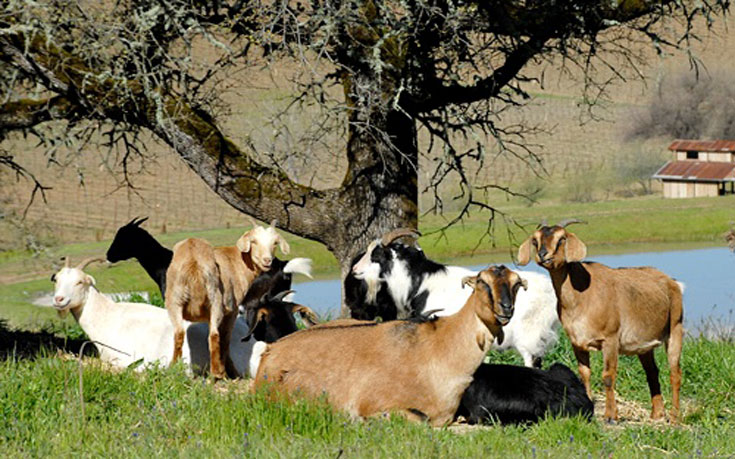
Goats graze and fertilize Dark Horse Vineyard's hillsides. | Photo courtesy of Dark Horse Vineyard
California agriculture emits eight percent of the state’s greenhouse gases. Setting farm animals loose in the vineyard reduces emissions by enriching the soil without burning natural gas to produce fertilizer, limiting the number of pests without spraying synthetic pesticides, and eliminating exhaust from petroleum-powered tractors.
Dolan also practices no-till and dry farming, or relying only on annual rainfall for irrigation, as does organic winemaker Ivo Jeramaz, manager of the Grgich Hills Estate vineyard in nearby Rutherford, California. “Most farms release carbon into the atmosphere,” Jeramaz says. “Our goal is to capture it.”
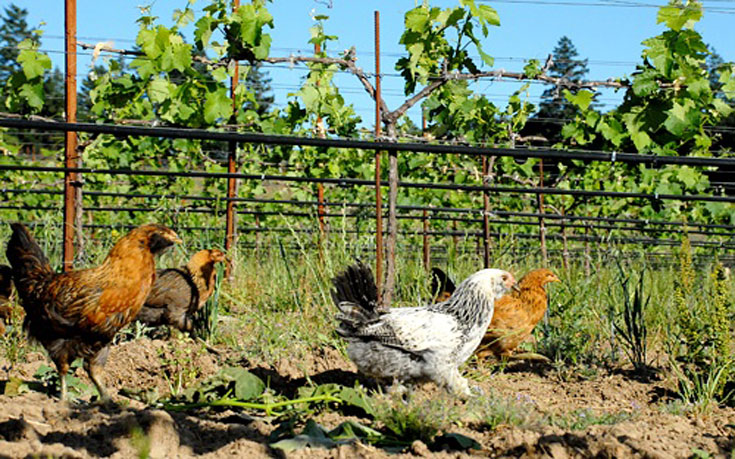
According to a report from the University of California at Davis, reducing the number of times per year that a farmer tills his or her land may be one of the most effective ways to sequester carbon. This is because turning the soil mixes microorganisms with organic matter, which microbes consume and then respire as carbon dioxide. Scientists from the U.S. Department of Energy estimate that a hectare (2.47 acres) of farmland tilled nearly half as many times as conventionally tilled land can sequester 300 kilograms of carbon per year.
Dry farming limits the amount of nitrous oxide emissions, which are 300 times more powerful than carbon dioxide emissions. Soil emits nitrous oxide when water fills air pockets, creating optimal conditions for microbes to respire nitrogen. So, not only do no-till and dry-farming practices sequester carbon and limit nitrous oxide emissions, but they also alleviate what the UN’s Food and Agricultural Organization’s scientists say is conventional agriculture’s costliest and most serious environmental problem: compacted soil. It limits growth, aeration, and water intake and promotes runoff, a likely cause of soil erosion.
The type of vegetation—annual versus perennial—is likely the most important factor in determining soil loss. Following a century-long Missouri field experiment, researchers concluded that annuals such as wheat and corn were 50 times more susceptible to erosion than perennial crops like grapevines and trees. Indeed, the roots of grapevines and other vineyard staples such as oak and olive trees extend several feet deep into sandy loam. They anchor the earth, store carbohydrates, and nourish microorganisms that enrich the soil. Perennial plants also absorb atmospheric carbon dioxide, converting it via photosynthesis into plant tissue. According to researchers from the Land Institute in Salina, Kansas, perennial plants can store up to 440 kilograms of carbon per hectare each year.
“We feed the soil, not the plant,” Jeramaz says as he points to a spreader that lined the vineyard with compost hours before the season’s first rain. Dolan feeds his vineyard’s soil by blending manure with pomace—a combination of the previous year’s grape skins, pulp, and seeds. This binds nitrogen to organic matter and eliminates the need to apply nitrogen fertilizer, the production of which consumes energy and serves as a potent source of nitrous oxide.
“Feeding soil with compost improves aeration, permits better water infiltration and storage, and increases earthworm populations,” says John Reganold, regents professor of soil science and agroecology at Washington State University. “Over time, growers who manage soil this way and follow good canopy management practices will create balanced vines that bear consistently higher-quality fruit.”
Without synthetic fertilizers, harsh chemicals, and viticultural practices that manipulate the vintage, wine made from biodynamically and organically grown grapes embodies the French notion of terroir, or the geography, climate, and soil of a vineyard.
“We are not Albert Einstein,” says Jeramaz. “We just follow what works in nature. With a healthy population of microbes, we can accomplish anything.”
This article has been modified since its original publication.
 The Magazine of The Sierra Club
The Magazine of The Sierra Club
